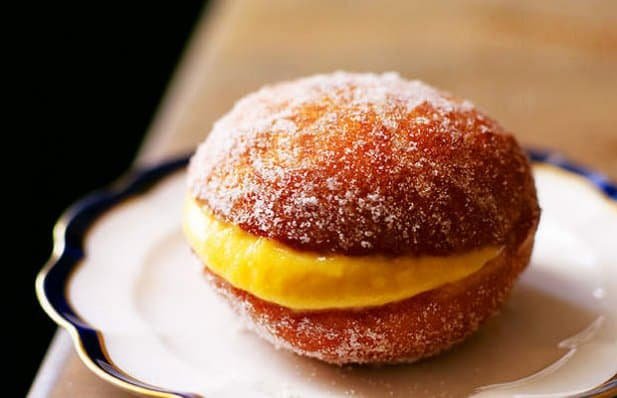Hello everyone! Welcome back with another tasteful topic, which is types of Portuguese bread. Whether you already know it or not, bread is the staple food of Portugal and due to this, it has a very important position not only in the kitchen of a Portuguese home but the kitchen of a restaurant as well.
There are many types of Portuguese bread that you can serve at the table before the evening meal, damp into a robust soup for lunch or toast and butter for breakfast. In short words, it is a fundamental part of almost every traditional meal in Portugal.
There are some places that are well-known for their baguettes or bagels, but the specialty of Portugal is that it offers a wider variety of delicacies. Learning about the countless types of Portuguese bread, many of which emphasize distinctive ingredients or reflect certain locations, is one of the best aspects of exploring its cuisine.
Here are some of the most intriguing and delectable types of Portuguese bread to help you understand what we mean and be ready to place an order at any bakery in Lisbon.
8 Types of Portuguese Bread
Is your mouth watering while imagining the delicious and flavourful types of Portuguese bread? Hold on to your craving, dear foodies, because there is a lot remaining to explore yet. So, let’s explore the 8 types of Portuguese bread that will create excitement in your gastronomy.
| Sr # | Types of Portuguese Bread |
| 1 | Pão Alentejano |
| 2 | Broa de Milho |
| 3 | Pão de Alfarroba |
| 4 | Bolo do Caco |
| 5 | Bolo Lêvedo |
| 6 | Pão de Água |
| 7 | Pão de Mafra |
| 8 | Papo-Seco |
Types of Portuguese Bread
Pão Alentejano
The Alentejo region of Portugal is well known for its bread, wine, and olives. It is only fitting that this predominantly rural area, which is known as the breadbasket of this country, has its own distinctive pão style.
Pão Alentejo holds notable popularity in the types of Portuguese bread, which translates to “bread from Alentejo,” a straightforward concoction of water, salt, yeast, and pure wheat flour. The trick is to use the ingredients of good quality and bake them in a wood-fired oven according to tradition.
You should prefer to look for the original shape of pão Alentejo, which is a giant loaf with a smaller mound of dough on top if you are searching for the real deal.
There are different shapes, sizes, and flavors of Portuguese bread, but you will find it delicious and prominent in the other types of Portuguese bread whenever you taste it.
Broa de Milho
Broa de Milho is another piece in the types of Portuguese bread that you must try whenever you visit Portugal. There are many different meanings of the word broa in Portuguese; with respect to food, you can take this word as either a small cookie or a style of bread.
Usually, when we talk about bread, we are actually talking about broa de milho, which is baked using cornmeal either in addition to or instead of wheat.
The end product resembles a hybrid of cornbread and a delicious wheat bread or sourdough loaf. Slightly sweet at times, crumbly and moist, it is a main element in many traditional Portuguese recipes like migas and bacalhau com broa.
You can get fine broa at superstores in Lisbon, but if you want to have a genuinely transcendent experience, try the broa de milho from Gleba.
Pão de Alfarroba
Alfarroba, or carob, is a product that resembles cacao in both taste and look. You may or may not be familiar with it. However, if you have gone to Portugal, you have probably had it someplace; it is quite frequent here, particularly when combined with bread.
Carob bread, or Pão de Alfarroba, is made using wheat (and occasionally rye) flour and just enough carob to give it a beautiful dark brown color. A simple sandwich or slice of toast can be elevated to a whole new level by its somewhat nutty flavor.
Sandwiches prepared with small circular rolls called Pão de Alfarroba are sold at many Portuguese cafés. Try one if you come across some.
Bolo do Caco
Just like many other islands, Madeira, has also developed its own culture of culinary through its centuries of separation from mainland Portugal. One of the popular types of Portuguese bread and staple dish of Madeiran cuisine is bolo do caco. It is a flat, round bread roll and has sweet potato as a secret ingredient.
Bolo do caco is frequently toasted on a griddle and covered in butter made with fresh garlic and herbs on the island. However, this adaptable bread is also the ideal size for sandwiches and burgers, which many eateries take use of to give otherwise well-known foods a distinctive Madeiran flair.
Bolo do caco is sometimes offered as an alternative to ordinary types of Portuguese bread or buns on menus, and it is usually a decent choice.
Bolo Lêvedo
Bolo Levedo also has a significant identification in all the types of Portuguese bread. The Azores, which is commonly known as the Açores in Portuguese, have their own distinctive types of Portuguese bread and you should never confuse it with Madeira. The bolo lêvedo originated in the settlement of Furnas, which is also well-known for its cozido, on São Miguel, the largest of these nine islands.
It has a rounded, flattened, and lightly browned appearance on both sides, similar to an English muffin. The inclusion of sugar, milk, and eggs in the recipe gives Bolos lêvedos a tastier and more flavorful taste than regular bread.
Bolo lêvedo is extremely popular in Furnas for breakfast, but you can also eat it for any meal, such as dessert.
Pão de Água
It may not sound very interesting, but pão de água actually means “water bread” if you speak even a little bit of Portuguese bread. Even though it is one of the easiest types of Portuguese bread, you might not enjoy its taste because it is nevertheless really tasty.
Pão de água from Portugal is fluffy, airy, and goes well with almost anything. It is typically sold in little circular rolls, but it can also be found in loaves that you can slice and eat with sandwiches or toast.
You can find inventive variations of the traditional pão de água, such as ones that use different types of flour or olives.
Pão de Mafra
Mafra is a city of Portugal that is located in just northern side of Lisbon and inland from Ericeira, and it is very famous mainly for its ornate National Palace and the uniqueness of its bread among the other types of Portuguese bread.
Whether it is in the shape of big loaves or little rolls, Púo de Mafra is a staple in its area and the city just like many other types of Portuguese bread.
Pão de Mafra has simple ingredients, but its flavor and velvety texture make it stand out. The original recipe calls for the use of stone-ground flour and a particular fermenting method.
If you want to try the real stuff, search for the elongated loaf with a slightly larger segment at one end, which is the original shape of pão de Mafra.
Papo-Seco
The papo-seco is often called a carcaça, and it also has many other names that are commonly used for it. It is one of the most recognizable but modest types of Portuguese bread. The ingredients that are used to prepare it are the same as for some of the other types of Portuguese bread on this list, such as wheat, water, salt, yeast, and occasionally oil or butter. So, there is nothing in particular that you can say is unique about them.
In this case, what element distinguishes Papo-secos from the rest of the types of Portuguese bread? The way of the preparation of these breads is just like oblong rolls. There is a split in the center of the bread, and they have a very light texture and a tender, soft crust. These are the types of Portuguese bread that you had never expected before.
Papo-Seco is one of the types of Portuguese bread that will excite your tastebuds with its awesome flavor. It might be unique for you as you will taste it for the first time, but it gives somewhat nostalgic feelings to Portuguese people who have grown up eating such types of Portuguese bread on a daily basis.
For a bifana, papo-seco is the recommended bun because its tender insides retain all the flavorful goodness of the marinated pork.
In this article, you have came to know about some distinct types of Portuguese bread with their own unique flavours, compositions, ingredients, and textures. Each of these types of Portuguese bread has its own identity and popularity with respect to its area.
So, is your mouth filling with water on this imaginary experience of those flavourful types of Portuguese bread? Well, if it is so, then for sure you must be seeking to dig deeper into the traditional foods of Portugal.
You will obviously get a lot to explore in the cuisine album of this country but for this, you should check out some insider tips on experiencing the Lisbon Street Food Scene.
Moreover, there is a more apetizing and flavorsome visit waiting for you in Porto where Port wine, vineyards, and the local meals are far beyond the limits of regions.
Most of you must be worried about the affordability of food in Portugal. It is essential for you to have the knowledge about the cost price of the necessary food items. It will help you to estimate your budget in accordance to that, when you are going to begin your stay in Portugal, temporarily or permanently.
To make it simple for you, here is the list of food items in the following:
Recommended Minimum Amount of Money for food (2400 calories, Western food types)
| Milk (regular), (0.25 liter) | 0.23 € |
| Loaf of Fresh White Bread (125.00 g) | 0.35 € |
| Rice (white), (0.10 kg) | 0.14 € |
| Eggs (regular) (2.40) | 0.55 € |
| Local Cheese (0.10 kg) | 1.00 € |
| Chicken Fillets (0.15 kg) | 1.03 € |
| Beef Round (0.15 kg) (or Equivalent Back Leg Red Meat) | 1.78 € |
| Apples (0.30 kg) | 0.59 € |
| Banana (0.25 kg) | 0.32 € |
| Oranges (0.30 kg) | 0.48 € |
| Tomato (0.20 kg) | 0.44 € |
| Potato (0.20 kg) | 0.29 € |
| Onion (0.10 kg) | 0.18 € |
| Lettuce (0.20 head) | 0.28 € |
| Daily recommended minimum amount of money for food per person | 7.65 € |
| Monthly recommended minimum amount of money for food per person
(assuming 31 days per month) |
237.09 € |
FAQs
Q1. What is the most popular bread in Portugal?
One of the best samples in the types of Portugueses bread is the Broa de Milho that is a hearty cornbread. The crust of this bread is crispy and the interior side is dense. The region of its origine is the rural north of Portugal, where it is cooked in a traditional way in the wood-fired ovens along the Minho region.
Q2. What are the different types of Portuguese bread rolls?
Bola de água, papo seco & carcaça are some of the popular types of Potuguese bread rolls. You can find these types of Portuguese bread everywhere when you visit Portugal. The soft and fluffy buns are the most common types of Portuguese bread and the reason of this common usage can be their practicality.
Q3. How do you eat Portuguese bread?
This type of Portuguese bread is a round, mahogany-colored loaf that frequently has overtones of vanilla and lemon. Though typically served without butter or just plain, it also makes excellent toast or French toast.















